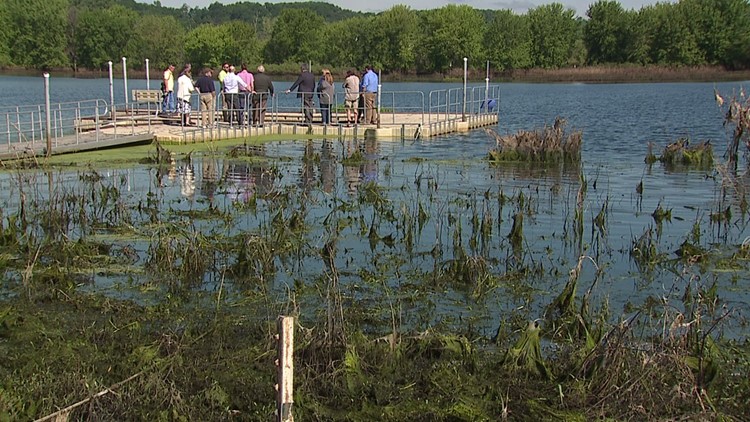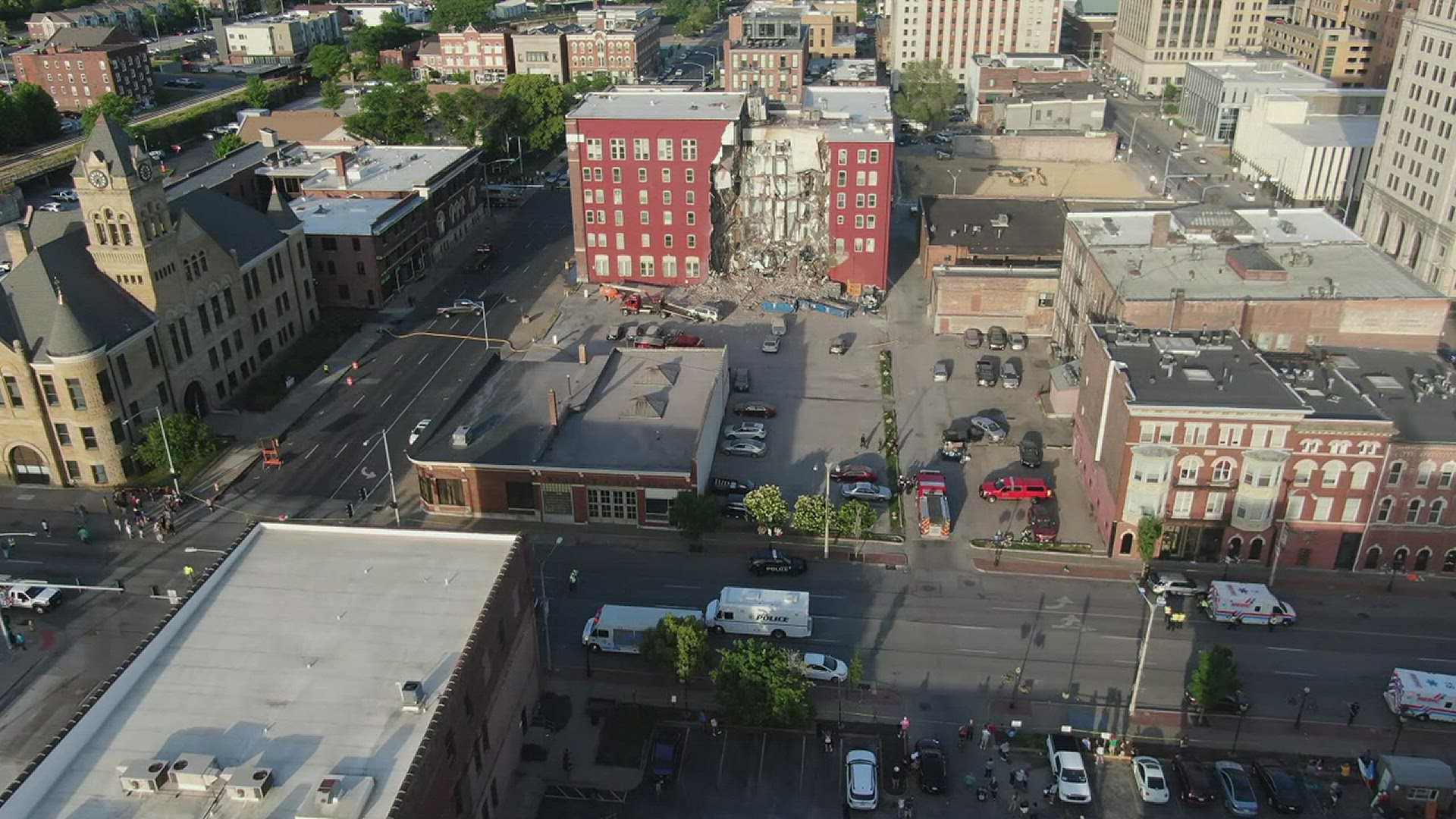DAVENPORT-- With the record flooding, comes talk of how to prevent future floods from overtaking land. We've all heard the argument of building a permanent flood wall along Davenport's riverfront. But now local lawmakers are exploring a more natural option.
With the birds chirping, you can hear it. With the sun glistening on the water, you can finally see it. With the rain gone and the river down, Nahant Marsh in Davnport is welcoming back two-legged visitors.
On Thursday, June 20, 2019, local leaders and policymakers headed to the marsh after 94 consecutive days of flooding.
Now Nahant Marsh Executive Director Brian Ritter worries some plants and animals won't make it back.
"They can tolerate a little bit of water, but that long duration, it's questionable if it will survive," says Ritter.
Despite those questions, this place has been an answer when it comes to fighting the Historic Flood of 2019.
"Not only do they serve as a place for recreation and habitat, but they're a release valve for the Mississippi River," says Ritter.
Once the Mississippi in the Quad Cities hits 12 feet, this ecosystem in the middle of city limits starts taking on water, preventing it from pouring into fields or streets. It's supposed to.
"Flooding is getting worse all the time, and this is one way to deal with it," says Ritter.
Right now Nahant Marsh is a 305-acre flood fighting basin. Ritter thinks the answer to future flood prevention is creating more of these. He says in the next few years, he hopes to expand the marsh by 200-acres.
"If we can do it naturally and keep our riverfront open, it would be such a great opportunity," says Iowa State Representative Cindy Winckler. She represents the part of Davenport that was directly impacted by the temporary barrier failure at Second and Pershing Streets back on April 30.
After learning more about the marsh, Winckler agrees. She says the next step is spreading that education to others.
"Give the public an alternative, because right now they think the only way to resolve this is a flood wall," says Winckler.
You can hear it, but Ritter wants to see it; people using nature to prevent future floods.
"We can only do so much. We need more of these places as a strategy," says Ritter.



